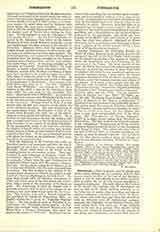

Itinerarium, a form of prayer used by monks and clerics before setting out on a journey, and for that reason usually printed at the end of the Breviary, where it can be conveniently found when required. Most probably the use of such prayers originated in monastic observance. The early rules of the Fathers of the Desert—St. Anthony and St. Pachomius—as well as that of St. Basil, legislate minutely as to the behavior of monks when traveling, and impose various restrictions and duties upon them. St. Benedict, whose rule, more than any other, has exerted so wide an influence over all ecclesiastical customs, monastic and otherwise, in the Western Church, laid down (chap. lxvii) that when any of the brethren were to be sent on a journey, they should, before setting out, commend themselves to the prayers of the abbot and community, by whom they were to be daily remembered during their absence from the monastery. According to monastic tradition, if the absence were to be only a short one, i.e. if they were to return the same or the following day, they merely asked the abbot’s blessing, usually at the conclusion of one of the canonical hours, and then requested the prayers of the community.
But if the journey was to occupy a longer time, a more solemn form of itinerarium was customary. Kneeling or lying prostrate at the altar steps, some versicles and prayers were recited over them by the abbot, who then dismissed the travelers with his blessing and the kiss of peace. This was most likely the origin of the itinerarium as we have it at present. The constitutions of the various orders and congregations usually legislate for the particular prayers to be used by their members before a journey, and the duty of a community to pray for those who may be traveling is fulfilled at the present day by the versicle “Divinum auxilium”, said for absent brethren at the end of each of the canonical hours. The inclusion of the itinerarium in the secular Roman Breviary indicates that its use is at least recommended to all clerics, though not obligatory. The “Caeremoniale Episcoporum” directs that a prelate ought to recite it with his chaplains or household before commencing a journey; and Gavanti mentions an ancient pontifical containing a longer form of itinerarium for the use of prelates. The usual form consists of the canticle “Benedictus” with antiphon, certain versicles, and several collects. Two of these latter are very ancient, being found in the Gregorian Sacramentary. In some modern editions of the monastic Breviary a shorter form of itinerarium is also given, for use “ante ambulationem extra monasterium”.
G. CYPRIAN ALSTON

